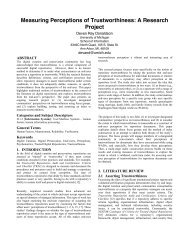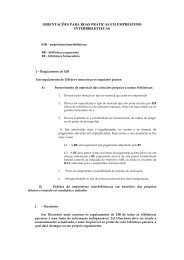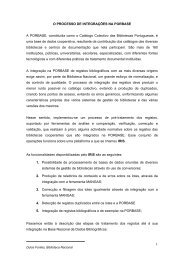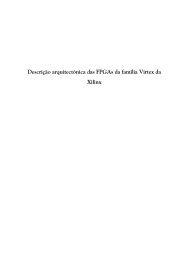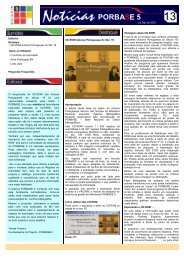Status report on global Neem usage - Biblioteca Nacional de Portugal
Status report on global Neem usage - Biblioteca Nacional de Portugal
Status report on global Neem usage - Biblioteca Nacional de Portugal
You also want an ePaper? Increase the reach of your titles
YUMPU automatically turns print PDFs into web optimized ePapers that Google loves.
4. NEEM IN DEVELOPMENT-COOPERATION PROJECTS<br />
CÔTE D’IVOIRE<br />
In c<strong>on</strong>trast to the neighbouring Ghana neem trees are much less abundant in CI and often<br />
replaced by cashew nut plantati<strong>on</strong> or sheabutter trees. Subsequently comparable few neem<br />
activities are going <strong>on</strong> in CI.<br />
The GTZ assisted agriculture extensi<strong>on</strong> organisati<strong>on</strong> ANADER in Korhogo, is training farmers<br />
to apply cru<strong>de</strong> neem water extract <strong>on</strong> neem seed basis as a home-ma<strong>de</strong> pestici<strong>de</strong> in<br />
vegetables.<br />
In additi<strong>on</strong> the Canadian NGO CAUSE, based in Korhogo, is training some women and<br />
village groups in neem soap producti<strong>on</strong> in the northern part of the country.<br />
In additi<strong>on</strong> some trials were set up by researchers to test commercial neem based pestici<strong>de</strong>s<br />
such as <strong>Neem</strong>azal in cash crops.<br />
CUBA<br />
INIFAT, Instituto Investigación Fund. Agricola Tropical<br />
(Tropical Agriculture Research Institute)<br />
Foun<strong>de</strong>d: 1991<br />
Short <strong>de</strong>scripti<strong>on</strong>: The GO "INIFAT, Instituto Investigación Fund. Agrícola Tropical, Departamento<br />
Protección <strong>de</strong> Plantas y Productos Bioactivos" is, inter alia, researching neem in its<br />
capacity as a biological pestici<strong>de</strong> and promoting its disseminati<strong>on</strong>.<br />
Activities with neem: Planting and afforestati<strong>on</strong> of neem for agricultural purposes and as<br />
erosi<strong>on</strong> protecti<strong>on</strong>; <strong>de</strong>velopment, manufacture and marketing of neem-based pestici<strong>de</strong>s.<br />
The project is supported by the German KATALYSE Institute, GATE/GTZ and some other<br />
Spanish and German NGOs. Currently the project intend to launch a country wi<strong>de</strong><br />
programme to exploit the potentials of neem, not <strong>on</strong>ly in the field of agriculture.<br />
CONTACT: Proyecto@anap.org.cu<br />
DOMINICAN REPUBLIC<br />
The first neem trees were planted in the Dominican Republic about 25 years ago. Today the<br />
stocks are estimated at over 1 milli<strong>on</strong> stems and new trees are being planted c<strong>on</strong>tinuously.<br />
This is all thanks to a comprehensive programme geared to disseminating the tree and<br />
know-how pertaining to its varied uses. The main sp<strong>on</strong>sor of this programme was a GTZ<br />
<strong>de</strong>velopment-cooperati<strong>on</strong> project which focused in particular <strong>on</strong> neem's <strong>usage</strong> as natural<br />
pestici<strong>de</strong>. At the beginning, the chances of establishing neem as a pestici<strong>de</strong> looked quite<br />
slim. Synthetic pestici<strong>de</strong>s were broadly in use, even though they had caused numerous<br />
acci<strong>de</strong>nts and a good <strong>de</strong>al of envir<strong>on</strong>mental damage. Even if the situati<strong>on</strong> has not changed<br />
that much in a lot of regi<strong>on</strong>s, a great many farmers are using neem today. They have planted<br />
56




